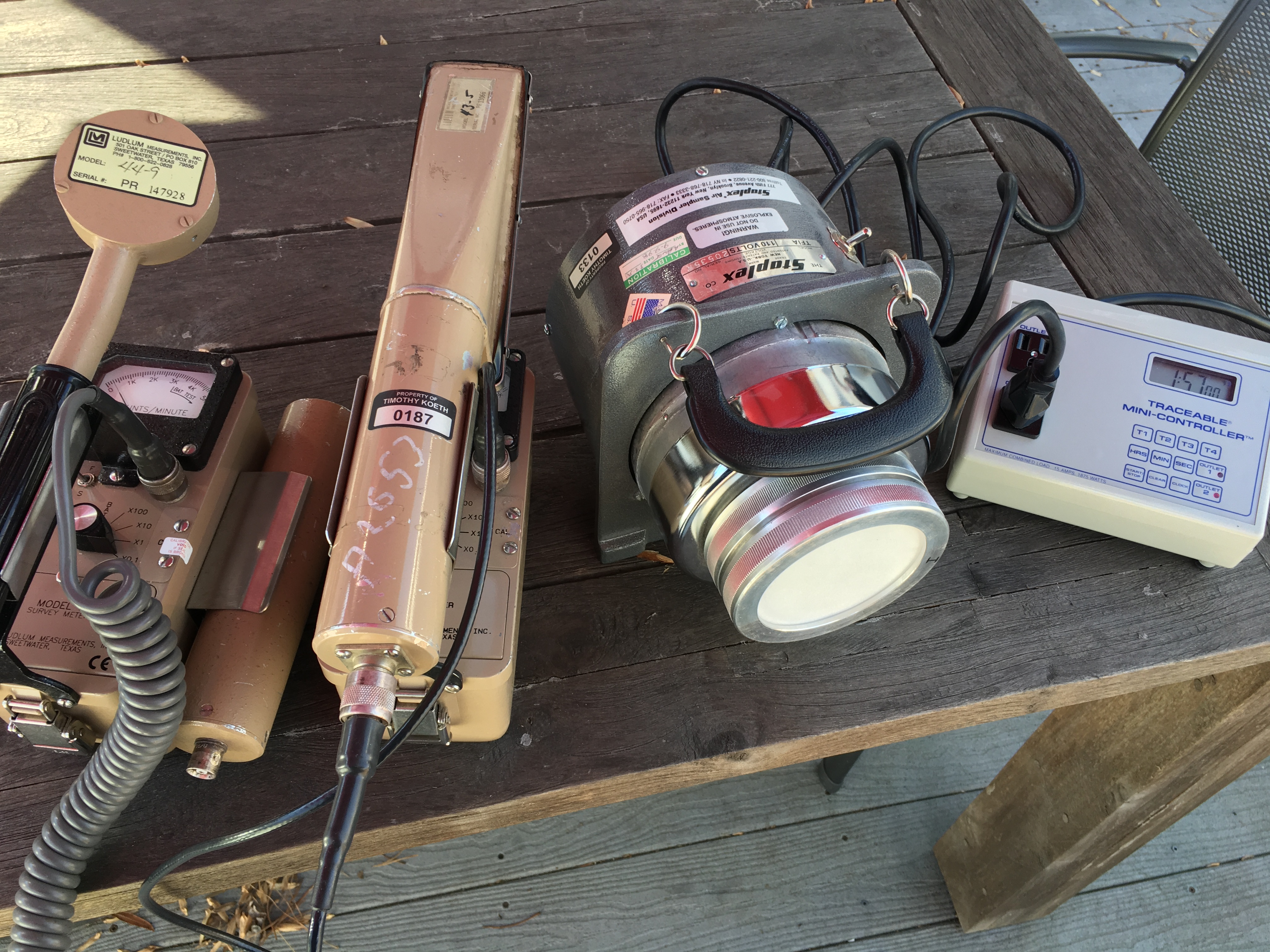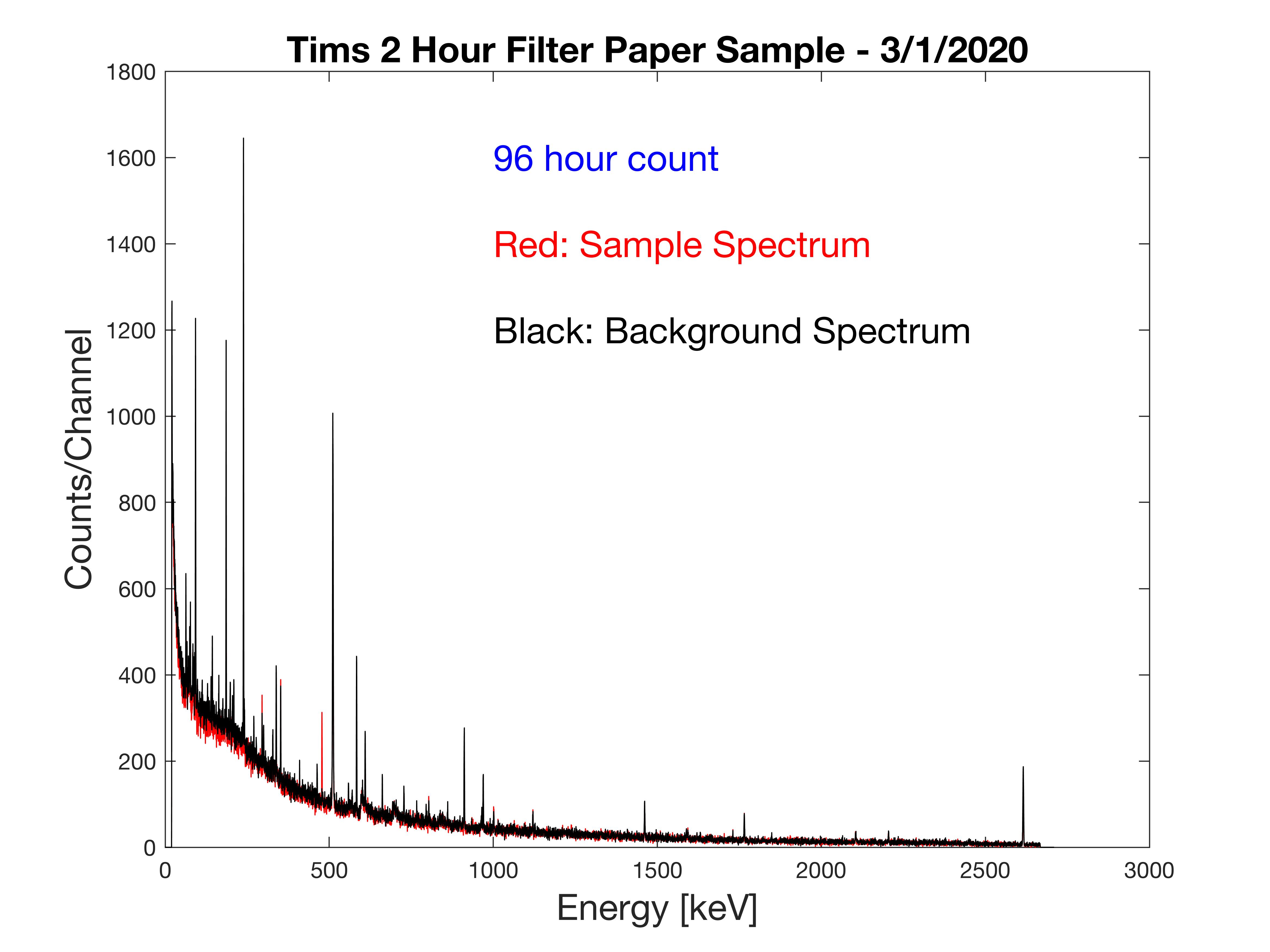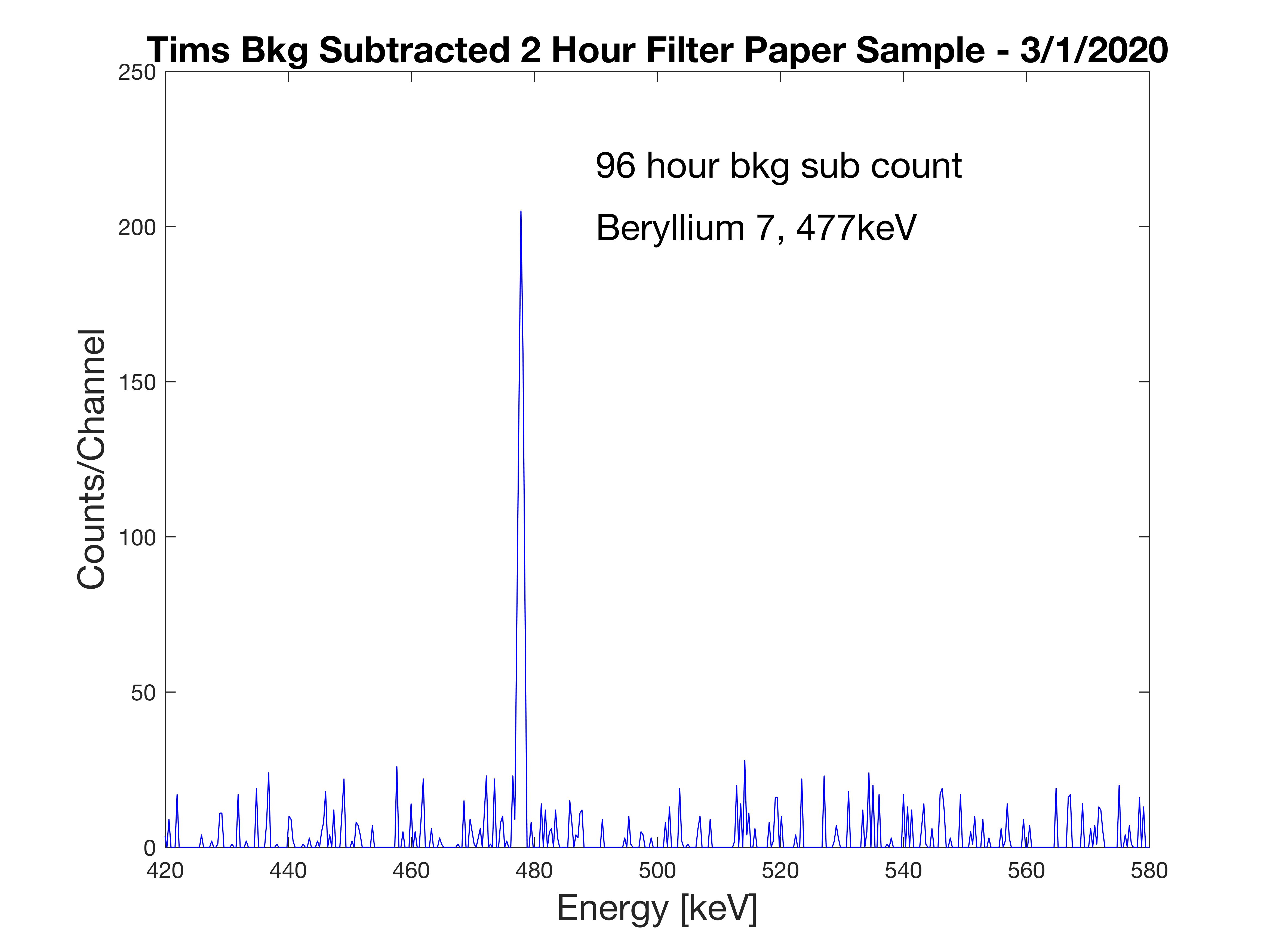Cosmogenic Be-7
Author: Tim
On March 1, 2020 I repeated an experiment that I ran a few years back (~7 years ago). In the present experiment, I’ve run a high-volume air sampler for 2 hours on the back deck. I then took a long “live time” background count (4 days or 96 hours or 345,600 seconds) on my 20% HPGe in the low background shield while I simultaneously let the filter paper “cool down” – letting all the radon daughters decay. Then after the 4-day Background count, I counted the filter paper on the HPGe over the next 4 days. All of the radon daughters products are clearly gone. At the end of 8 days, I subtract the 4-day background from the 4-day filter paper spectrum, and see what is left. There is only 1 line, and that is of Be-7 at 478keV.
After the first 2-hour air sample, I took a second 2-hour air sample under identical conditions, and I repeated the process with my 50% HPGe, but that is in a higher radon-background environment
Here are the photos of all the experiment and the analysis results.











Performing an identical analysis with my other HPGe. This detector is a 50% relative efficiency detector (the above is 20%), however, this detector while shielded by a lead castle, it in a higher background from my basement’s radon (which of course is a variable background).
The second filter paper sample was similarly let to “cool off” for four days. It was then counted for four days. Then I took a four-day background count. Sure enough, the Be-7 peak presented itself:


It is interesting to note, despite the higher background, that still number of net counts was roughly double for this filter paper, taking advantage of the higher detector efficiency.


